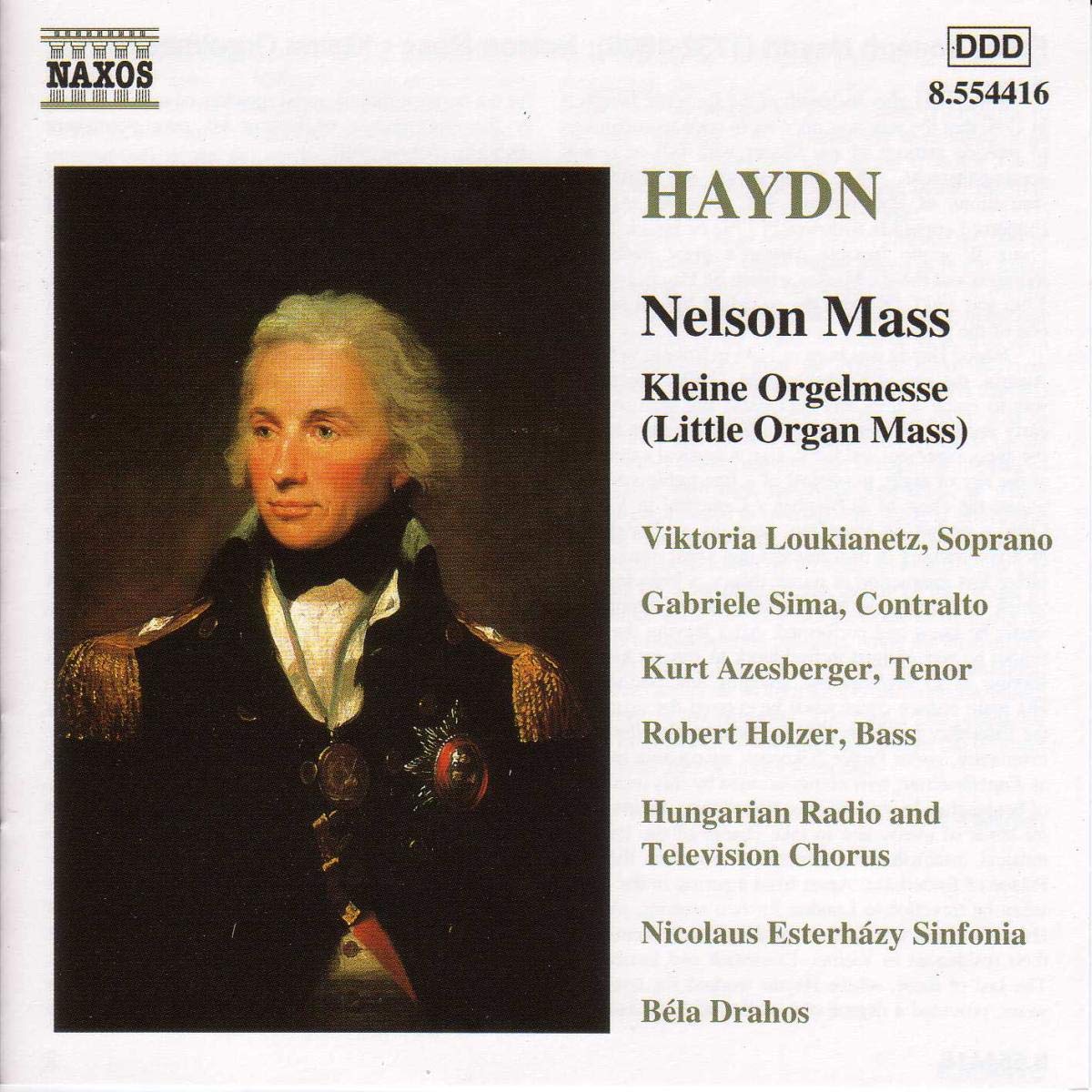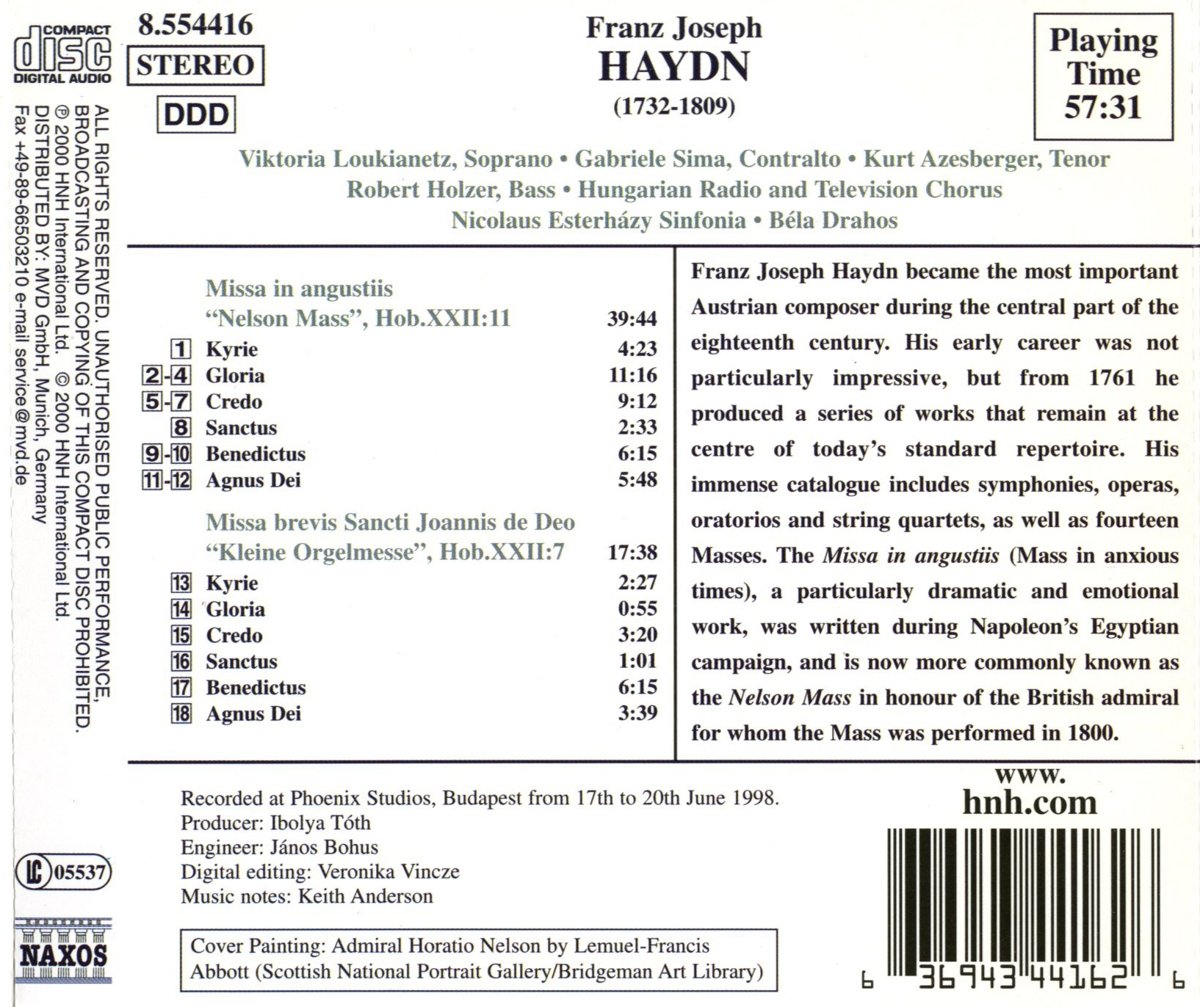
kompozytor
Haydn, Joseph
tytuł
HAYDN: Nelson Mass
wykonawcy
Holzer, Robert;
Nicolaus Esterhazy Sinfonia;
Drahos, Béla;
Hungarian Radio Chorus;
Azesberger, Kurt;
Loukianetz, Viktoria;
Sima, Gabriele
Nicolaus Esterhazy Sinfonia;
Drahos, Béla;
Hungarian Radio Chorus;
Azesberger, Kurt;
Loukianetz, Viktoria;
Sima, Gabriele
nr katalogowy
8.554416
opis
The Nelson Mass was originally scored for three trumpets, timpani, strings and organ, with the organ part later transcribed by the Esterházy Kapellmeister Johann Nepomuk Fuchs for woodwind. The Mass is truly symphonic and opens impressively, trumpets and drums to the fore in the ominous key of D minor, before the entry of the soprano soloist. The joyful Gloria is in three sections, a D major Allegro in which soloists are contrasted with the full choir, followed by a B flat major Qui tollis, marked Adagio, opening with a bass solo and moving to D minor with an accompaniment of organ and strings. The final section recalls the first in a cheerful D major Allegro, leading to the customary fugal ending. The Credo is again in three sections, an Allegro con spirito and Vivace in D major framing a G major Largo that starts with a moving soprano solo, Et incarnatus est. The third section, Et resurrexit soon moves from B minor to D major once more, to end in triumph. The Sanctus starts with a meditative Adagio, soon leading to a livelier Pleni sunt coeli. The Benedictus, moving from D minor to an energetic D major Hosanna in excelsis, gives further prominence to the solo soprano, with continuingly demanding high tessitura. Solo voices are used in the G major Agnus Dei, a movement of prayerful serenity, before the final contrapuntal D major Dona nobis pacem. •
The earlier Missa brevis Sancti Joannis de Deo or Kleine Orgelmesse (‘Little Organ Mass’) in B flat major was probably written in the winter of 1777-78 for the chapel of the Brothers of Mercy in Eisenstadt, in honour of the founder of the order, St John of God. It is on a much smaller scale than the Nelson Mass and was originally scored for violins and organ, with a soprano soloist in the Benedictus and a four-part choir.
nośnik
CD
gatunek
Muzyka klasyczna
producent
Naxos
data wydania
20-03-2000
EAN / kod kreskowy
636943441626

(Produkt nie został jeszcze oceniony)
cena 58,00 zł
lubProdukt dostepny w niewielkiej ilości.
Wysyłka w ciągu 3 dni roboczych
Darmowa wysyłka dla zamówień powyżej 300 zł!
Darmowy kurier dla zamówień powyżej 500 zł!
sprawdź koszty wysyłki









































